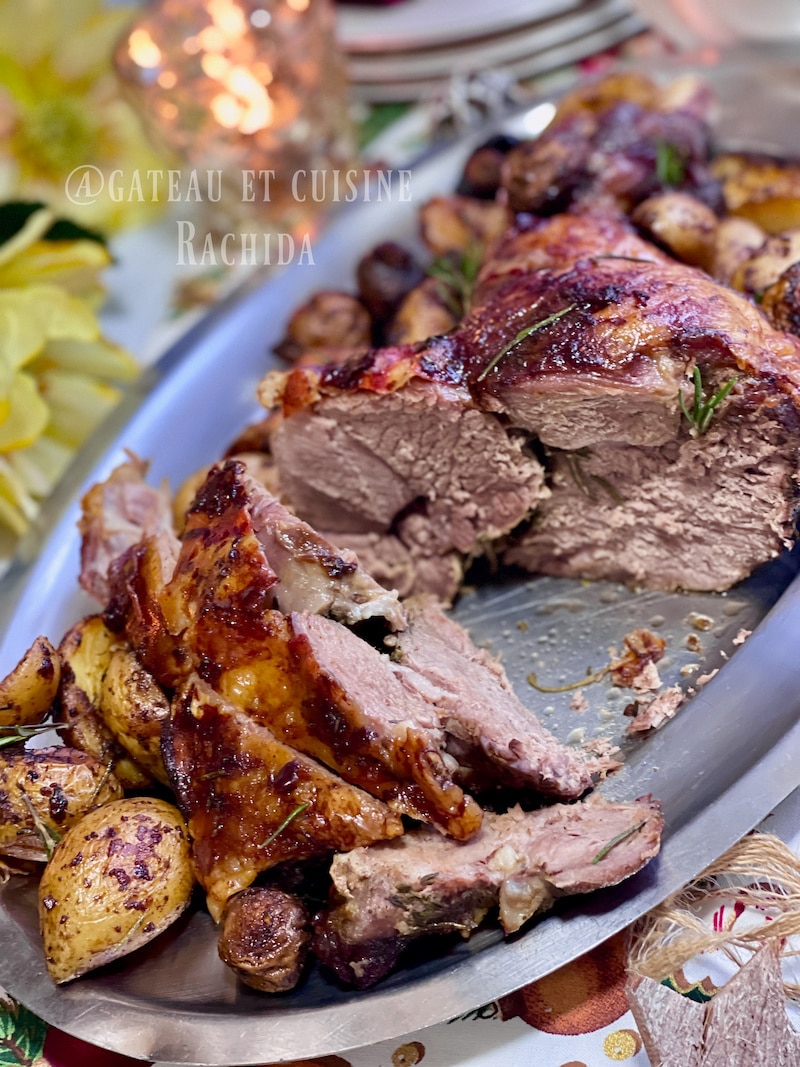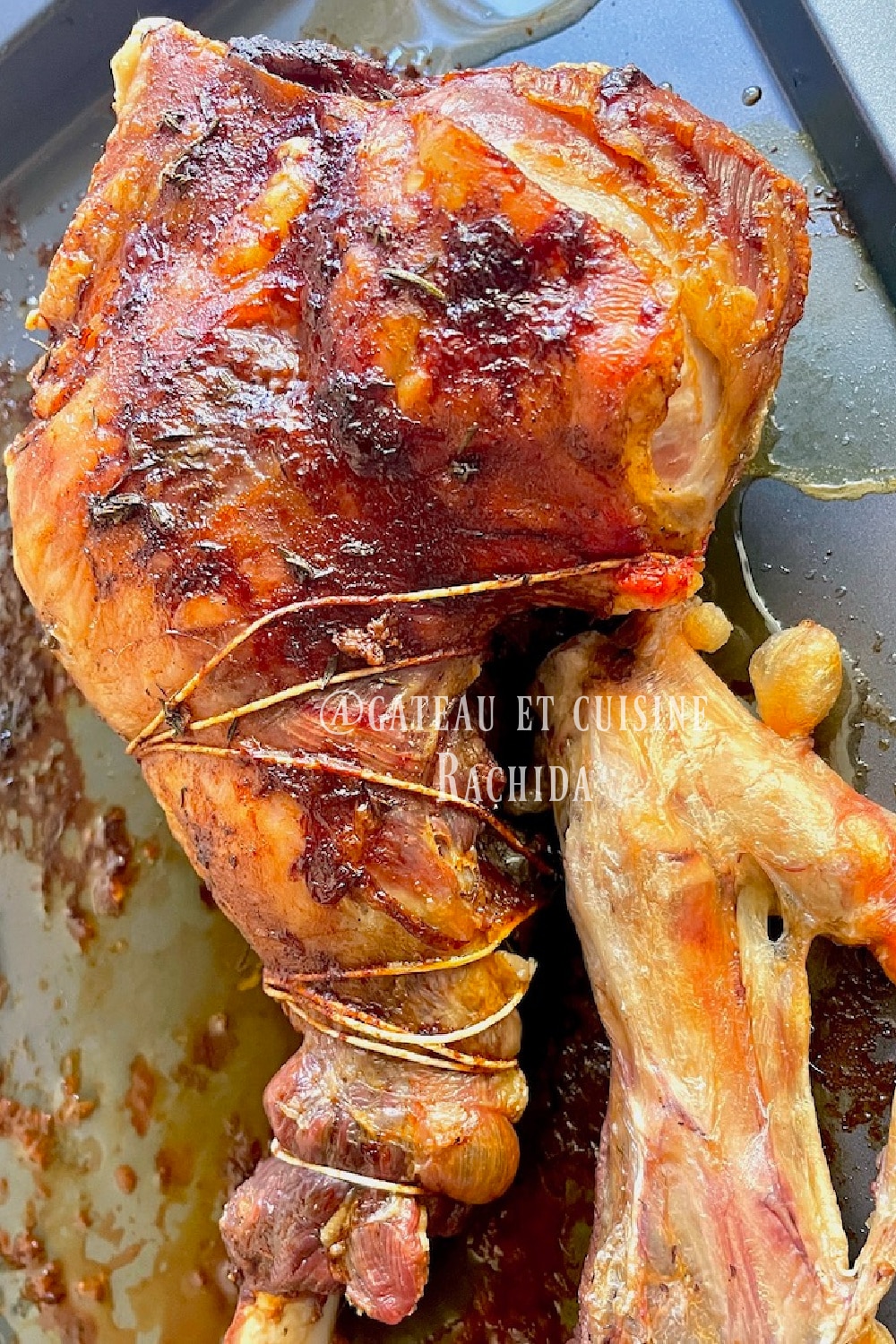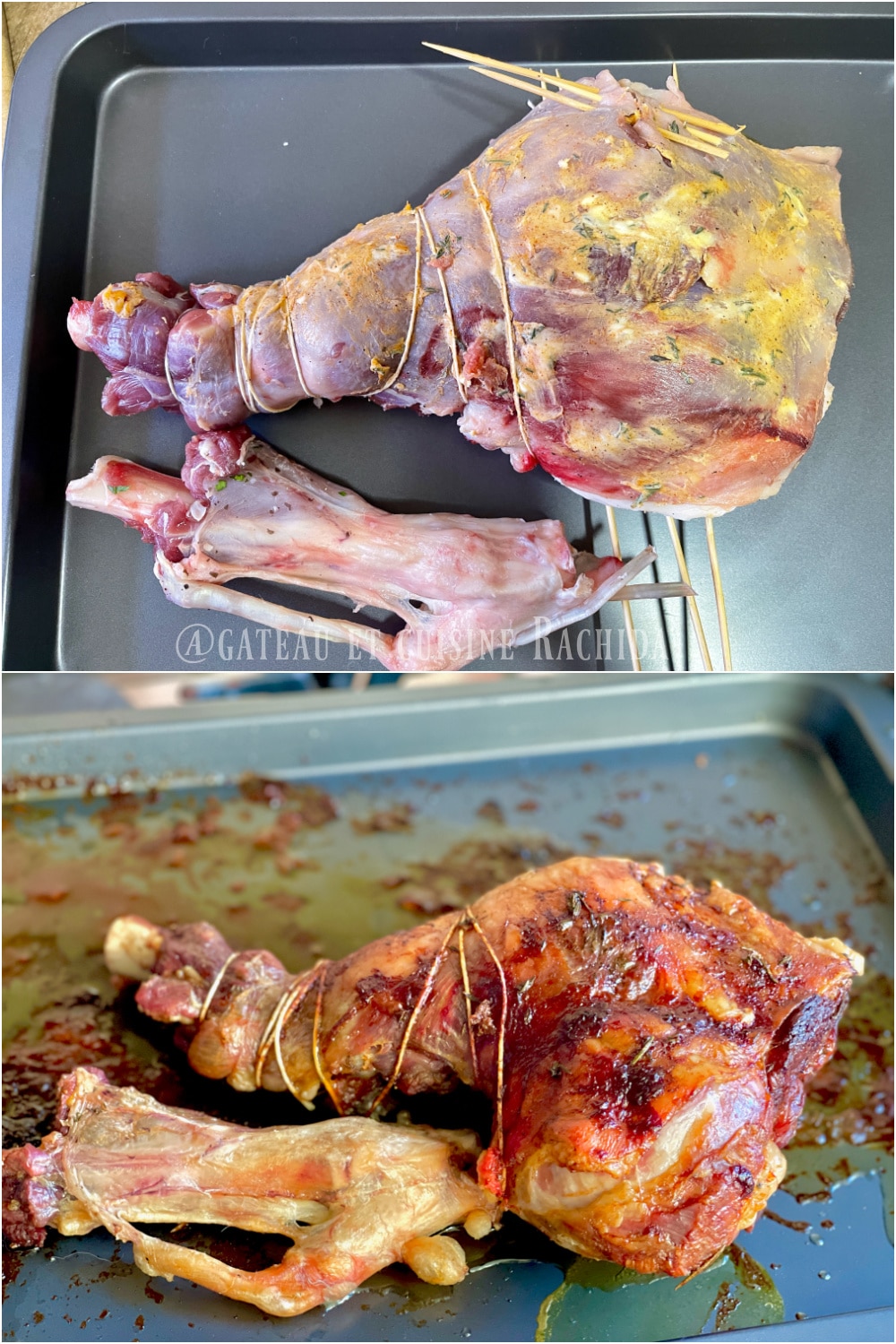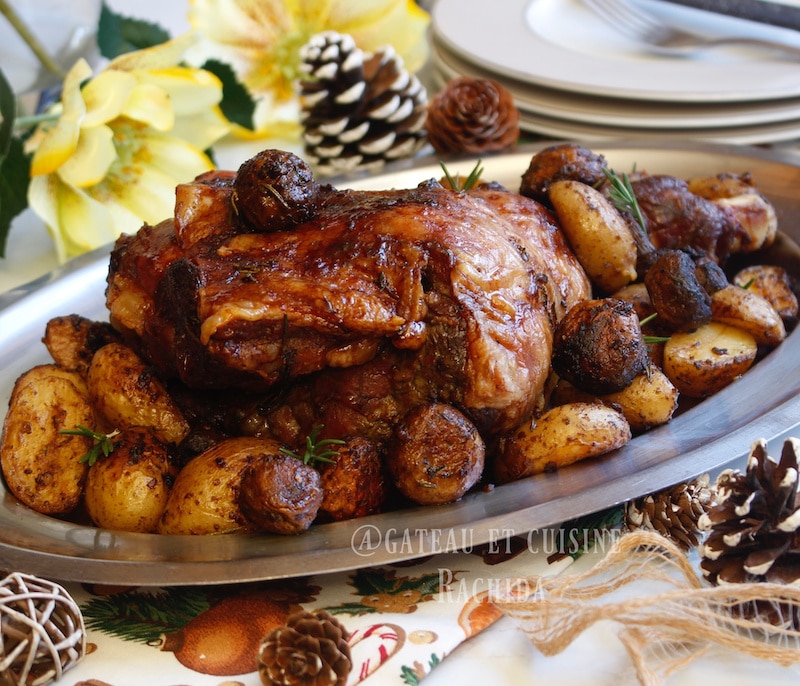
the secrets of cooking leg of lamb
Leg of lamb is one of the most popular cuts of meat for family meals and special occasions, especially at Easter, when it’s a must. You’ve probably wondered how to cook leg of lamb successfully so that it melts and juices just right, to impress your guests.
This question often comes up at Easter, Christmas or any other convivial occasion. We all want to enjoy a tender, melt-in-the-mouth roast leg, cooked according to our preferences: rosé, medium or well done. The leg of lamb can be cooked in a variety of ways: in the oven, in a casserole or on the grill, but the most common method is in the oven. All these methods require little preparation time.
To make a success of your leg of lamb, place it in an ovenproof dish and season with salt, pepper and the herbs and spices of your choice. Sprinkle with garlic cloves and place in the oven. You can opt for slow cooking, if you have time, or fast cooking. Whichever method you choose, if you follow the tips and tricks carefully, you’ll obtain tasty, melt-in-the-mouth meat.
Once you’ve read all my tips, be sure to check out my full recipe below for the perfect leg of lamb.


Oven-roasted leg of lamb
Table of Contents
How to Choose the Right Weight of Leg of Lamb per Person
The weight of the leg depends on how many people you’re cooking for.
In general, you’ll need between 300 and 350 g of raw leg of lamb (with the bone) per person.
Plan on a 2 kg (4.4 lb) leg to serve about 6 people.
If you’re expecting extra guests or want leftovers, it’s best to choose a slightly heavier leg.
Slow-cooking leg of lamb at low temperature
The secret to achieving a juicy, tender leg of lamb with zero risk is slow roasting at low temperature. This method allows the meat to cook gently, resulting in a melt-in-the-mouth texture, a juicy interior, and a beautiful golden crust.
If you choose a moderate temperature, such as 150°C (302°F), the cooking time should not exceed 3 hours. You can lower the temperature to 120°C (248°F) if you have more time.
If the meat isn’t golden enough, you can grill it for about 10 minutes at 200°C (392°F) on the broil setting at the end of the cooking time.
For every 500 g (1.1 lb) of meat, allow about 30 minutes of cooking time for well-done meat.
To check the doneness, use a meat thermometer inserted into the center of the leg. When the temperature reaches 66°C (151°F), the meat is well cooked.
The cooking time per 500 g will decrease depending on how rare or well-cooked you want your lamb.
If you don’t have a thermometer, you can check doneness by piercing the center of the leg with the tip of a knife. If the juice that comes out is red, the meat is undercooked, this is what we call a rare (blue) doneness. The meat is medium when the juice is light pink. If the juice is clear, the meat is well done.

Best cooking of leg of lamb
Using a Meat Thermometer to Master Doneness
Using a probe thermometer is very useful for mastering the internal cooking of meat. By taking the internal temperature of the meat, you can know its doneness.
In the image below, you will find a chart showing the different temperatures according to the doneness level of your meat.
By checking the internal temperature of the meat, we can control the doneness, which for pink meat is 55-58°C (131-136°F) for medium-rare, 60°C (140°F) for medium, and 66°C (151°F) for well-done.
We can go up to 75°C (167°F) for meat with no trace of pink.
Quick Cooking Method for Leg of Lamb
If you’re in a hurry and can’t stay by the oven for more than two hours, you can speed up the cooking of a leg of lamb. Don’t worry, you’ll still get tender, flavorful meat. It’s very simple: increase the oven temperature and reduce the cooking time.
For medium-rare lamb, cook for 12–15 minutes per 500 g (1.1 lb) at 200°C (392°F) for the first 15 minutes, then reduce the temperature to 180°C (356°F) for the rest.
- A 2 kg leg will take about 1 hour.
For well-done lamb, cook for 25 minutes per 500 g (½ kg) at the same temperatures.
- A 2 kg leg will take roughly 1 hour and 40 minutes.
Place the leg in a preheated oven at 200°C for 15 minutes, then reduce the temperature to 180°C to finish cooking. Starting at high heat sears the outside of the meat, helping to seal in the juices. This method results in tender, juicy meat every time.

Leg of lamb with tender, melting meat
ingredients :
- 1 leg of lamb, about 2 kg (4.4 lbs)
- 4 garlic cloves (feel free to add more in the roasting pan)
- 1 sprig of fresh rosemary
- 1 teaspoon of sweet paprika
- 2 tablespoons of softened butter
- 1 sprig of fresh thyme
- Salt and pepper, to taste
Preparation Steps for Perfectly Roasted Leg of Lamb
Bring the leg of lamb to room temperature. If it was in the refrigerator, take it out 30 minutes to 1 hour before cooking.
Mix the softened butter with the sweet paprika, and the rosemary and thyme leaves.
Prepare the lamb by trimming any excess fat with a sharp knife and patting it dry with paper towels. Season with salt and pepper.
If the leg is boneless, insert garlic cloves inside. If it’s bone-in, make two small incisions near the shank and insert two garlic cloves.
Rub the entire leg with the butter mixture, massaging it well so the flavors penetrate the meat.
Tip: You can do this the day before or a few hours ahead and refrigerate the lamb, wrapped.
Preheat the oven to 200°C (392°F).
Place the leg in a roasting pan, meaty side up, and place the bones (if any) alongside.
Roast in the preheated oven for 15 minutes at 200°C (392°F).
Then reduce the oven temperature to 180°C (356°F) and continue roasting for 45 minutes for medium-rare or 1 hour 25 minutes for medium-well.
Every 20 minutes, baste the lamb with its juices and turn it so it cooks evenly.
Add a splash of water each time if the juices are drying up or reducing too much and risk burning.
If the lamb browns too quickly before the end of cooking, cover it loosely with foil and continue roasting.

If you have a meat thermometer, check the internal temperature of the lamb leg. For medium-rare, it should read around 60°C (140°F); for medium, about 65°C (149°F); and for well-done, up to 75°C (167°F).
After cooking, let the lamb rest for 15 to 30 minutes under a sheet of aluminum foil to allow the meat to become more tender.
Collect the cooking juices from the roasting pan. If needed, add a bit of water and bring to a boil for one minute.
Drizzle the lamb with the juices and garnish with a few sprigs of rosemary.
Serve with mashed potatoes, flageolet beans, or green beans, for example.

Tips and Tricks for Perfectly Roasted Leg of Lamb
To achieve tender, juicy meat, it’s essential to avoid a few common mistakes.
First, never pierce the leg of lamb. This would allow the cooking juices to escape, leaving the meat dry. If your leg is not boneless, it’s better to insert garlic cloves into the shank (the meatiest part at the bottom of the leg) rather than making multiple incisions all over the meat.
The remaining garlic cloves can simply be placed in the roasting pan around the lamb, where they’ll gently roast and confit during cooking. This will infuse flavor without drying out the meat.
At the end of cooking, remove the lamb from the oven and cover it loosely with aluminum foil. Let it rest for 20 to 30 minutes, this step is crucial to allow the meat fibers to relax and the juices to redistribute evenly.

How to cook leg of lamb successfully?
INGREDIENTS
- 1 leg of lamb about 2 kg (4.4 lbs)
- 4 garlic cloves feel free to add more in the roasting pan
- 1 sprig of fresh rosemary
- 1 teaspoon sweet paprika
- 2 tablespoons softened butter
- 1 sprig of fresh thyme
- Salt and pepper to taste
PREPARATION
- Bring the leg of lamb to room temperature. If it was in the refrigerator, take it out 30 minutes to 1 hour before cooking.
- Mix the softened butter with the sweet paprika, and the rosemary and thyme leaves.
- Prepare the lamb by trimming any excess fat with a sharp knife and patting it dry with paper towels. Season with salt and pepper.
- If the leg is boneless, insert garlic cloves inside. If it’s bone-in, make two small incisions near the shank and insert two garlic cloves.
- Rub the entire leg with the butter mixture, massaging it well so the flavors penetrate the meat.
- Tip: You can do this the day before or a few hours ahead and refrigerate the lamb, wrapped.
- Preheat the oven to 200°C (392°F).
- Place the leg in a roasting pan, meaty side up, and place the bones (if any) alongside.
- Roast in the preheated oven for 15 minutes at 200°C (392°F).
- Then reduce the oven temperature to 180°C (356°F) and continue roasting for 45 minutes for medium-rare or 1 hour 25 minutes for medium-well.
- Every 20 minutes, baste the lamb with its juices and turn it so it cooks evenly. Add a splash of water each time if the juices are drying up or reducing too much and risk burning.
- If the lamb browns too quickly before the end of cooking, cover it loosely with foil and continue roasting.
- If you have a meat thermometer, check the internal temperature of the lamb leg. For medium-rare, it should read around 60°C (140°F); for medium, about 65°C (149°F); and for well-done, up to 75°C (167°F).
- After cooking, let the lamb rest for 15 to 30 minutes under a sheet of aluminum foil to allow the meat to become more tender.
- Collect the cooking juices from the roasting pan. If needed, add a bit of water and bring to a boil for one minute.
- Drizzle the lamb with the juices and garnish with a few sprigs of rosemary.
- Serve with mashed potatoes, flageolet beans, or green beans, for example.
